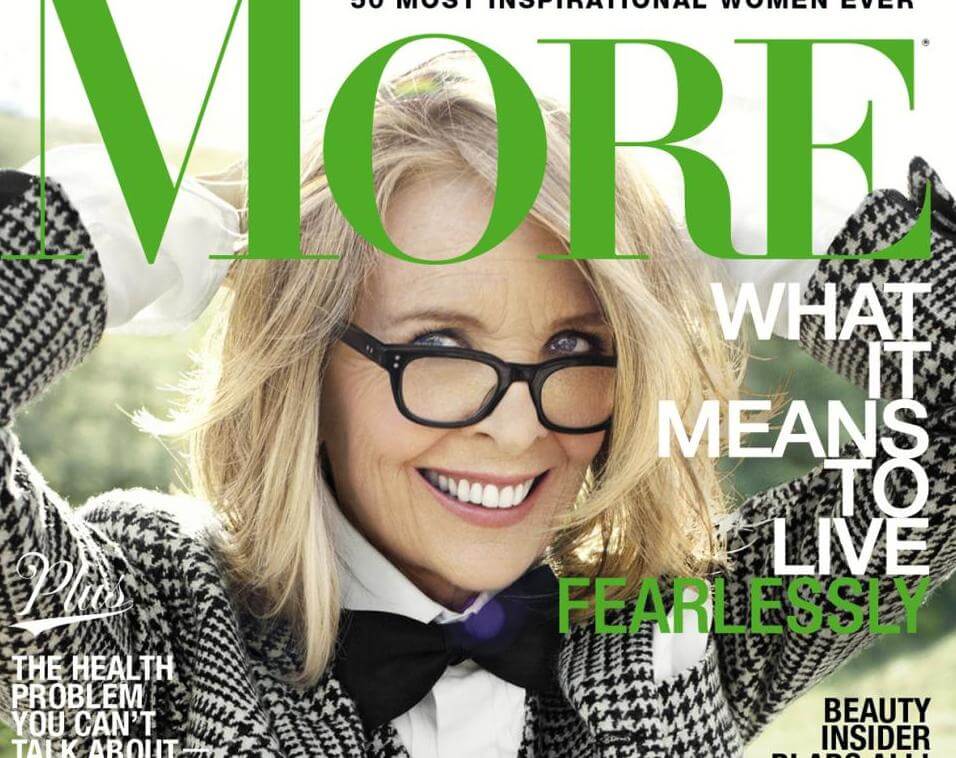'More' magazine dares to show what an older woman really looks like. And she's truly beautiful.
This article was made possible because of the generous support of DAME members. We urgently need your help to keep publishing. Will you contribute just $5 a month to support our journalism?
There are wrinkles on the cover of a magazine. Female wrinkles. Damn right! I actually had to peer through my progressive lenses extra hard to make sure. And there they were. Diane Keaton’s between-the-eyes frown lines, the ones normally vanquished by Botox, naked and bare, for all to see. Um, was this allowed? It felt wickedly subversive, kind of like when Diane Keaton was wearing men’s clothes in the ’70s.
Kudos to More magazine for being brave enough to do this, although after the shitstorm caused by L’Oreal’s extreme Photoshopping of Keaton a few months earlier, I guess they had nowhere else to go. But it feels thrilling to see a real older woman’s face. Similar to seeing a rare bird.
Perhaps we’re nearing a tipping point. This season, as I was watching Veep, it seemed that Julia Louis-Dreyfus had eased up on the Botox and was actually letting us see her, um, wrinkled forehead. As her character says in Enough Said, about being with a middle-aged man: It’s kind of sexy.
Or maybe there are just simply too many Baby Boomers around now to pretend that older people don’t exist. Maybe when you have your own children you realize that beautiful smooth skin is simply an indication of the short length of time spent out of the womb, and not some awe-inspiring moral virtue.
If big, bold nerdy glasses can be recast as hip, why not wrinkles? I foresee the day that the image of a woman’s older, creased face replaces that of the hollow-eyed waif on the runways and pages of women’s magazines—I mean, what could be more cutting edge and beautiful than being authentic?
And from the pages of those magazines, they would inevitably enter the mainstream. Oh, how great would that be. To think it all may have started with Diane Keaton’s frown lines. La di da.
